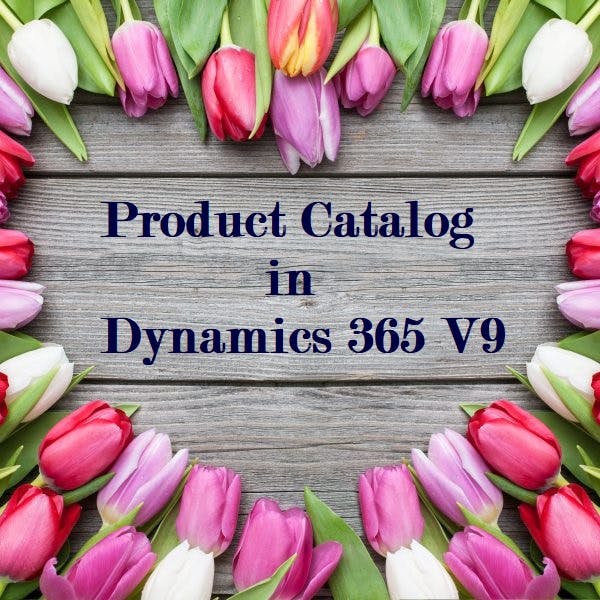Product Catalogue in Dynamics 365 V9
Ana DemenyWelcome to the ins and outs of the Product Catalogue in V9.
The Product Catalogue in Dynamics is not as widely used as other areas of Dynamics 365, but knowing about it is very valuable, as it unleashes a wealth of functionality, such as forecast and revenue calculations, or automations with regards to Opportunities, Quotes, Orders and Invoices.
The Product Catalogue can be found in the Settings menu has the following components, or things you can setup:
Product & Product Families
Products are the actual thing we are selling. It can be a physical object (flowers, computers, cakes, coffee, dresses, aperol spritz etc.) or a service (software licenses, support packages, cleaning services etc). Product families are a way to set common properties to a Product. For example, if your product is a flower, we can define a property called: Season. This might be something you might want to add to most of your products, given that flowers can have different prices depending on the season.
Price List
Remember last time, when we were talking about Sales Territories and Currencies? We said then that these would make sense in the bigger picture. Well, Price Lists are part of the bigger picture. They hold a reference of our Product, as a certain price, for a certain time. For example, say we use Sales Territories to define geographical regions. We would have one Sales Territory for each country (yeah, we're international!). Tulips would cost less in Holland than Norway, so we'd have different price lists to define the same product, but with different pricing.
Unit, Unit Groups
They define how we're going to sell a product. We might define our base unit as one tulip, but we only sell our flowers as a minimum of 5. A unit group would be a collection of multiple units, in our case a bouquet made of 5 tulips.
Discount Lists
The name is self explanatory. You can create discount lists to apply to a sale for a client you consider important because they are loyal to your services or they are friends or family, etc.
Product Catalogue Setup
The Product Catalogue elements work together as they would in a physical shop or super market.
In order to have a list of products with price, you will have a Price List with Price List Items referencing certain Products. Something like this:
Then, a Product will have it’s own properties and characteristics. The product is not just the actual item we want to sell, but how we are going to sell it, in what quantity, how we measure it. This is why, when we create a product, we also set a Unit Group and a Default Unit representing what’s the minimum quantity for a product our context and what is the minimum quantity we are going to sell.
For example, our Default Unit for Tulips would be 1 tulip, but we know we’re only going to sell a minimum of 10, so our unit group represents that.
Going back to Products, you can see I have also selected a Family Hierarchy and a Default Price List, for more information on my product:
There are many other fields on the Product Entity that are not on the form, but can easily be added. These fields can be used to manage your stock and calculate your margin.
Another thing to note on the product catalog elements is that they have a lifecycle. The rules are very simple:
- Nothing can be used, unless in an Active State (to activate a Product, Unit Group, Price List, you need to click Publish)
- Retired Products cannot be used in new Opportunities but they continue to live on the existent ones. It’s hard to go wrong with these statuses, because CRM will refuse to let you reference inactive elements (we’ve seen plenty of that in my live session :D).
IT’s worth having a look at the Product Ribbon, because it’s got some useful buttons that allow you do stuff:
(please click and open the full image. I'll get a lightBox soon.)
Another quick thing to mention - before I direct you to a step by step links for setting up the Product Catalogue – is that the Unit, Unit Group structures have changed slightly in Dynamics 365. It creates the Primary Unit, with a Quantity of 1, when you create the Unit Group:
But then, if you want to add more units, you have to navigate to your Unit Group, click on the arrow next to your group name and select Units:
Once you get there, you’ll be able to add more units:
For a very good step by step guide on how to set it all up, please refer to the Microsoft Documentation.
You can also see how to set everything up in a video recorded by yours truly. This video asumes you already know something about how all elements work:
My inspiration for how to explain all this came from a video recorded by Sarah Critchley. She goes through Accounts, Contacts, but from minute 17, she’s talking about the Product Catalogue.
